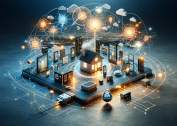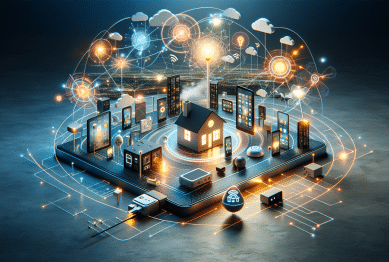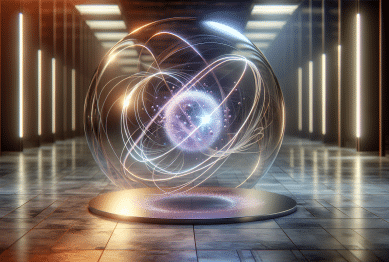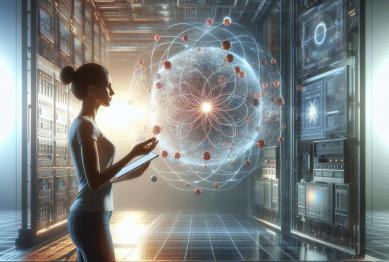In today’s hyperconnected world, our digital lives have become increasingly cluttered. Notifications buzz around the clock, inboxes overflow, and our devices are saturated with unused apps, old files, and relentless distractions. As technology becomes more essential, a new wellness trend is emerging: digital declutter. But what does it really mean, and how can it reshape our relationship with technology?
Exploring the concept of digital declutter isn’t about rejecting technology—it’s about regaining control over how we interact with it. Just as we organize physical spaces for clarity and productivity, digital spaces need thoughtful attention too.
Why Digital Declutter Is Crucial in an Overstimulated World
Cognitive Load and Constant Distraction
The average American checks their phone 144 times a day, according to a 2023 report by Reviews.org. This level of interaction, much of it passive or reactive, fragments focus and contributes to digital fatigue.
Research from the University of California, Irvine found that it takes an average of 23 minutes to regain full focus after a digital interruption. Multiply that by dozens of distractions, and it’s no wonder productivity is suffering.
Emotional Strain From Digital Noise
Beyond performance, cluttered digital environments can elevate stress. Emails that go unanswered, social media feeds filled with comparisons, and endless tabs create low-grade anxiety that builds over time.
A study in Computers in Human Behavior (2022) linked digital disorganization—such as a chaotic desktop or inbox—to higher perceived stress and lower satisfaction.
What Is Digital Declutter, Exactly?
Digital declutter refers to the intentional process of removing unnecessary digital tools, platforms, notifications, and content to foster better focus, emotional wellbeing, and intentional technology use.
Coined by author Cal Newport in his book Digital Minimalism, the idea encourages individuals to pare back to only the digital tools and habits that genuinely add value.
It’s not a detox or a cleanse. It’s a sustainable method to streamline how we interact with tech—without losing touch.
How to Start a Digital Declutter: A Step-by-Step Guide
1. Audit Your Devices and Platforms
Start by identifying where your digital clutter lives. Key areas include:
- Smartphone apps
- Browser bookmarks
- Email inboxes
- Cloud storage
- Social media accounts
- Desktop files
Make a list of what’s essential, what’s useful, and what’s outdated.
2. Cut Out the Noise: Notifications and Popups
Disable non-essential notifications across devices. Most users don’t need real-time updates for social apps, promotions, or system suggestions.
Consider turning off:
- Email push alerts (check manually 2–3x per day instead)
- News apps with repetitive breaking headlines
- Badge icons that demand constant attention
3. Unsubscribe, Unfollow, Uninstall
Clear space by removing digital content and connections that no longer serve you.
- Unsubscribe from newsletters you never read
- Unfollow accounts that drain attention or create negative comparisons
- Uninstall apps you haven’t used in the last month
This not only reduces clutter but also improves your algorithms, showing you more relevant and intentional content.
4. Organize Your Files and Tabs
- Create a folder system for cloud and local files
- Close unused tabs daily—consider a tool like OneTab or Tab Wrangler
- Back up important documents and delete redundant versions
Treat your digital storage like a physical workspace—clean, purposeful, and easy to navigate.
Building Long-Term Habits for Digital Wellbeing
Use Time Limits and App Trackers
Tools like Screen Time (iOS) or Digital Wellbeing (Android) let you monitor and cap usage. Set realistic limits on social media or browsing apps to regain hours of mental clarity.
Batch Your Digital Activities
Rather than checking emails, messages, or news randomly throughout the day, dedicate specific blocks of time to these tasks. This helps reduce context switching and allows deeper work.
Define Your “Digital Essentials”
Make a list of tools, platforms, and content that genuinely improve your life. This gives you a reference when deciding what to keep and what to eliminate in future reviews.
Benefits of Digital Decluttering
Better Focus and Productivity
Less noise means fewer interruptions. A simplified digital environment enables more consistent deep work, faster retrieval of information, and stronger mental flow.
Improved Mental Health
Reducing exposure to negative social content and digital obligations lowers anxiety and fosters a greater sense of control over your environment.
Enhanced Relationships
When devices aren’t constantly competing for attention, people report more present and meaningful interactions with friends, family, and colleagues.
A 2021 report by Common Sense Media found that teens and adults who practiced weekly digital declutter rituals were more likely to describe their screen time as “intentional” and “positive.”
Digital Declutter in the Workplace and Schools
How Teams Can Promote a Culture of Digital Declutter
Companies are beginning to recognize the value of digital hygiene. Initiatives include:
- Email-free Fridays
- Slack etiquette guidelines
- Shared calendars with “deep work” blocks
Tools like Notion and Asana can consolidate communication, reducing platform sprawl and alert fatigue.
Teaching Students the Value of Digital Declutter Early
Schools and universities are incorporating digital wellbeing programs. Some are teaching students how to organize their files, manage screen time, and curate healthier online habits.
These early lessons build lifelong skills for a future where digital clutter will only increase.
Common Misconceptions About Digital Declutter
“How Teams Can Promote a Culture of Digital Declutter.”
It means curating your digital spaces so they align with your values. If social platforms enhance your life, they stay.
“It’s a one-time cleanup.”
Digital declutter is ongoing. Think of it like weekly tidying—necessary for long-term clarity.
“Teaching Students the Value of Digital Declutter Early”
Everyone can benefit. Whether you’re a student, creative, remote worker, or executive, digital clutter affects your time, energy, and mindset.
Final Thoughts
As digital environments become more embedded in our lives, keeping them organized and meaningful is no longer optional. Exploring the concept of digital declutter gives us tools to step back, recalibrate, and re-engage on our own terms.
Small actions—like deleting unused apps or muting alerts—can lead to significant gains in clarity, calm, and control. In an age of endless input, subtraction may be the most powerful strategy we have.
References:
- Reviews.org (2023). “How Often Do Americans Check Their Phones?” https://www.reviews.org/mobile/cell-phone-addiction/
- Computers in Human Behavior (2022). “Digital Disorganization and Stress.” https://pmc.ncbi.nlm.nih.gov/articles/PMC10561583/
- Common Sense Media (2021). “Teens, Social Media & Mental Health.” https://cassybayarea.org/common-sense-census-media-use-by-teens-tweens-2021/










